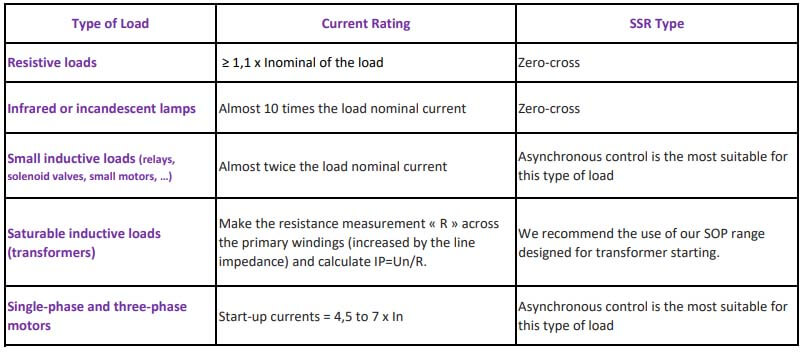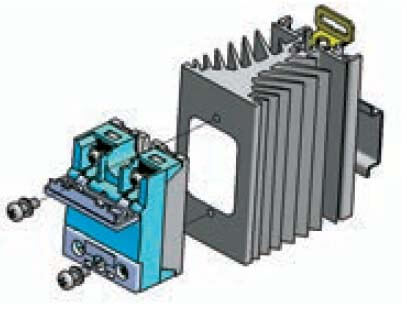Select the right SSR

When choosing a solid state relay (SSR), the choice should be based on the respective application conditions and the technical capabilities of the SSR itself. It is important to take into account the overcurrent and overvoltage conditions in the circuit versus the SSR ratings.
We have compiled all the key questions for choosing the right SSR for you. This will help you to include all key parameters.
The 5 questions are as follows:
1-What control voltage or input signal should be used to activate the SSR?
You will need to determine the control voltage value. This is the SSR's control voltage which is required to energise your load.
Unlike EMRs (Electromechanical Relays) which are typically controlled by a fixed voltage, Solid State Relays have a wide range of input control signals, either Vdc, Vac, or dual Vac/Vdc.
celduc relais offers DC or AC or AC/DC control voltage for its SSRs.
2-How many poles do you need to switch ?
When choosing a Solid State Relay, you will need to be aware how many phases are to be switched in terms of the load. For a single phase AC load, you will need a single phase AC switching SSR. For three-phase AC loads, you will need to decide if you want to switch all three lines to the load (for this, you will need a three-phase AC switching SSR), or if you are only switching two lines (for this, you can use our 2-leg three-phase SSRs: two of the three phases are switched by the SSR, the third is directly connected).
For a DC load you will need to choose a DC switching Solid State Relay.
3-What type of load do you have?
SSRs can switch normal loads on/off, but for some abnormal loads, specific instructions must be followed to prevent excessive current and overvoltage from damaging the device.
Most of celduc’s SSRs (except SO9, SU9, SA9, SMT9, etc. which are specifically used for heating control) are designed with state-of-the-art technology, which makes them appropriate for controlling inductive loads (solenoid valves, electromagnets, motors, etc.).
When in use, the switching current flowing through the SSR output should not exceed the rated output current under the relevant temperature, as stipulated in the product data sheet (please refer to the tables and thermal curves). The potential inrush current must not exceed the relay's overload capacity.

The SSR's current rating is selected according to different load types, depending on whether there is an inrush current or not:

The load power supply's voltage must not exceed the solid state relay's rated output voltage and cannot be less than the stipulated minimum output voltage. The maximum peak voltage value for solid state relays should be less than the value of the transient voltage. When switching the AC inductive load OFF, single phase and 3-phase motors, or capacitive loads, an overvoltage, which may be twice the peak voltage of the power supply, may occur.
4-How to mount / install your SSR ?
After you have defined the technical characteristics required for your Solid State Relay, you need to choose which SSR will fit your application in terms of housing, connection type, etc.
celduc offers a wide range of Solid State Relays, these are available in different mounting configurations with various wiring options: PCB or DIN rail mounted, with screw connections or removable spring terminals, etc.
5-What is the ambient temperature in the location where the SSR will be installed ?
It is essential to know the operating ambient temperature as this will determine which heatsink to choose.
HOW TO CHOOSE THE RIGHT HEATSINK ?

celduc relais can help you choose the right Solid State Relay for your application.
Please download our SELECTION GUIDE CATALOGUE which will give you an overview of celduc's range of solid state relays.
